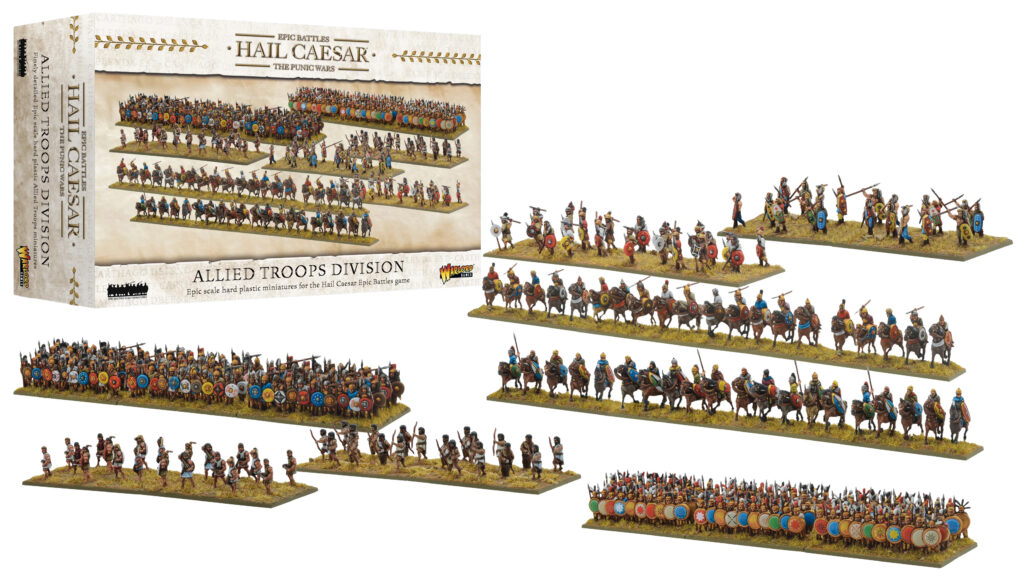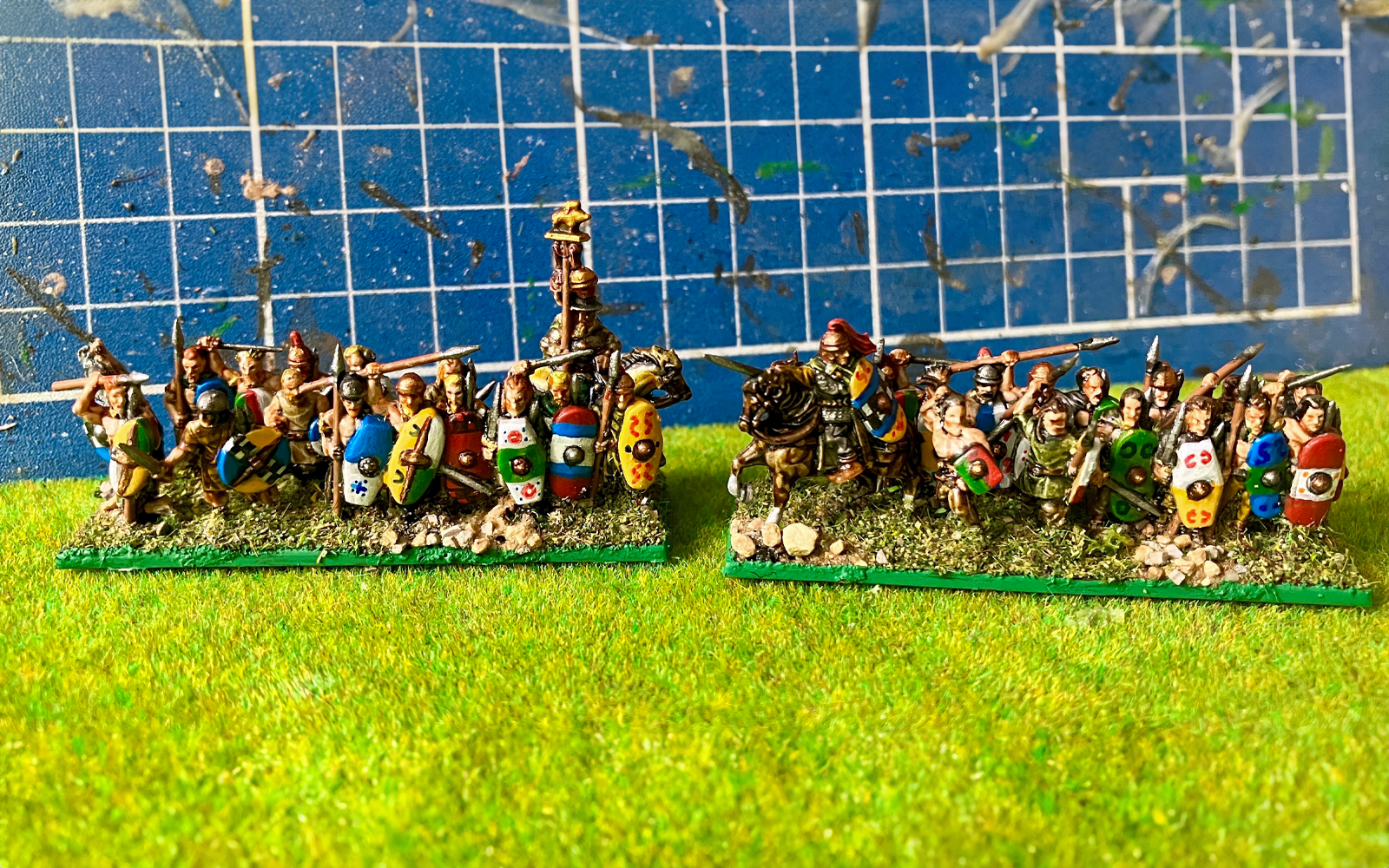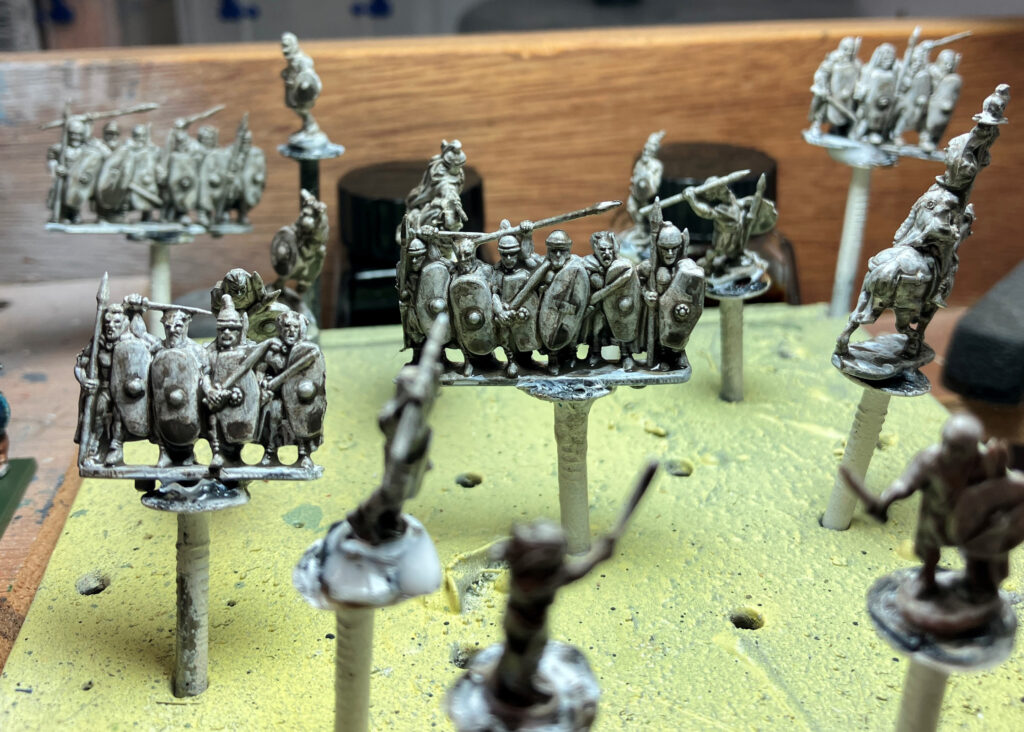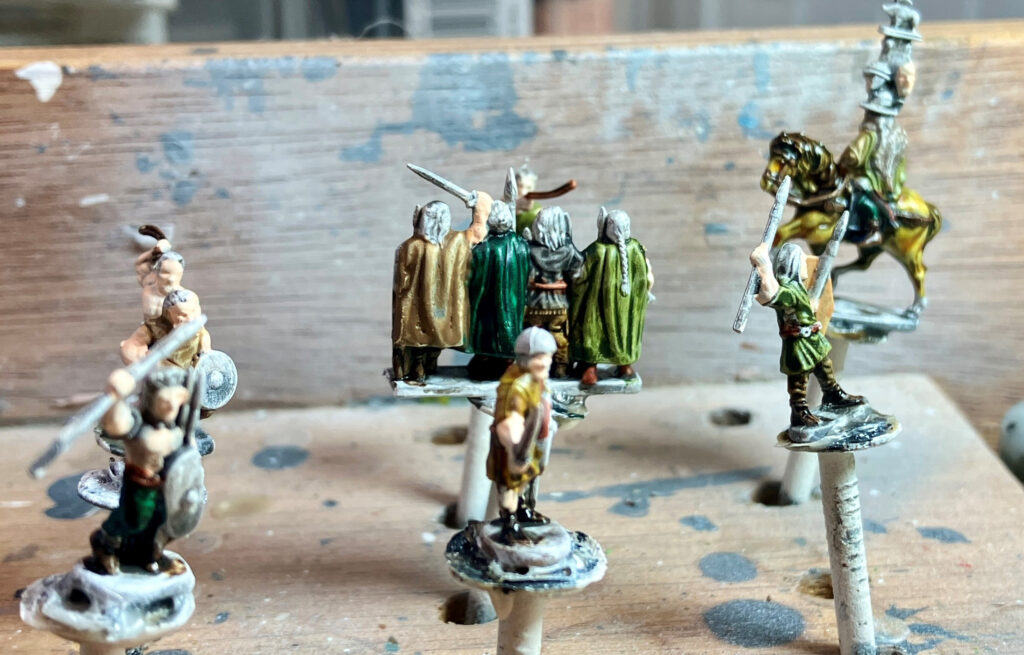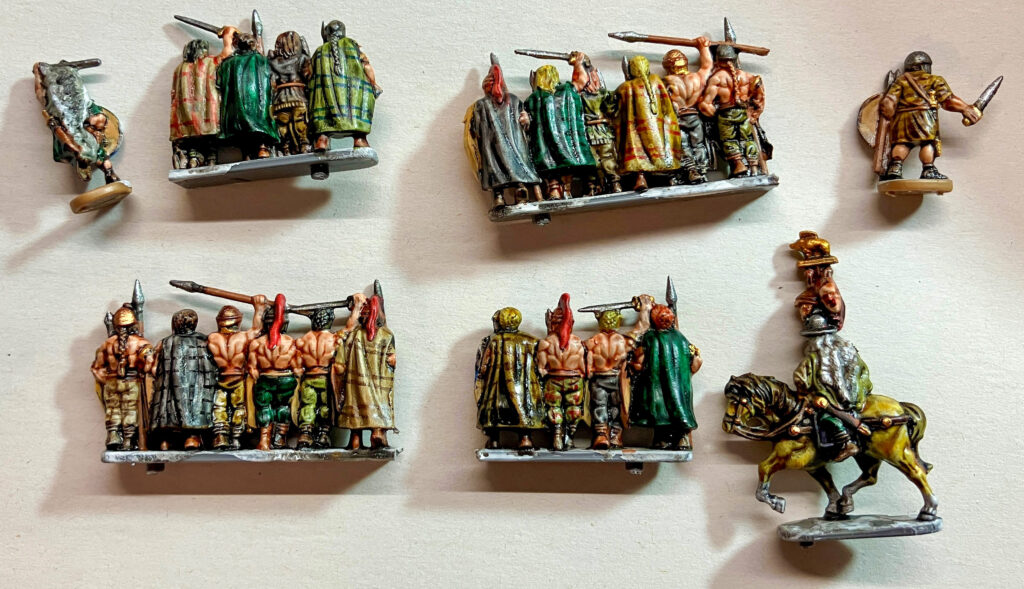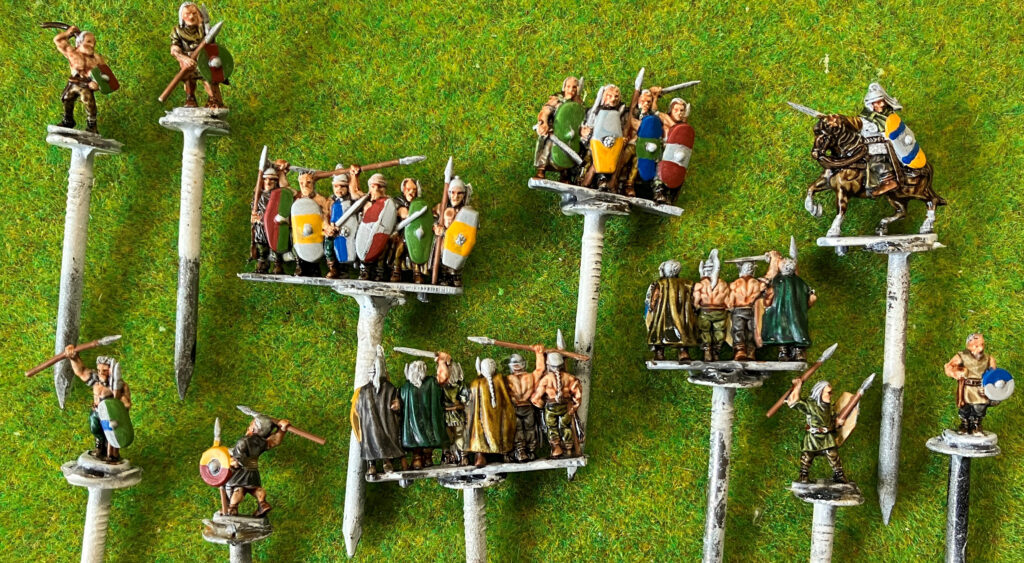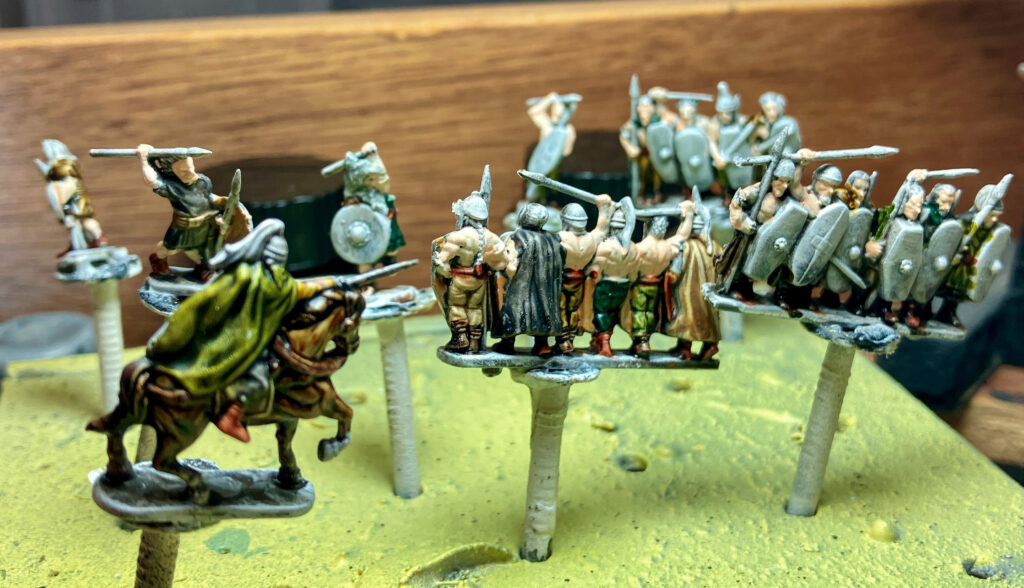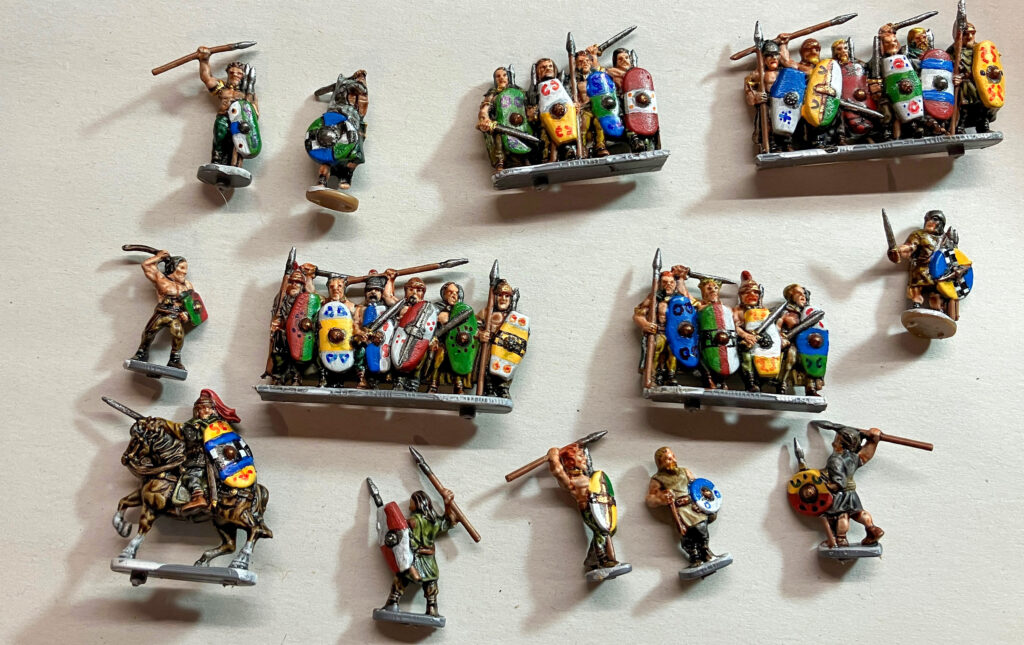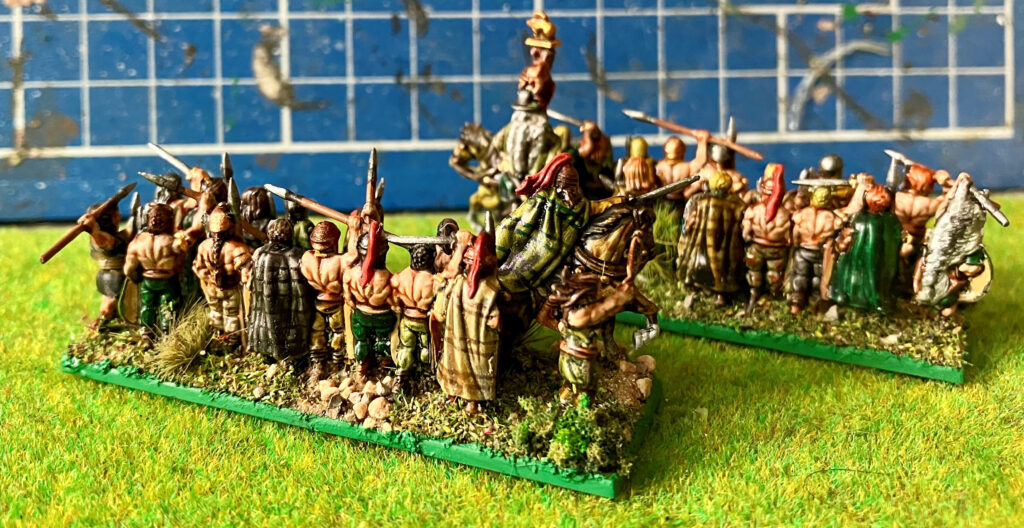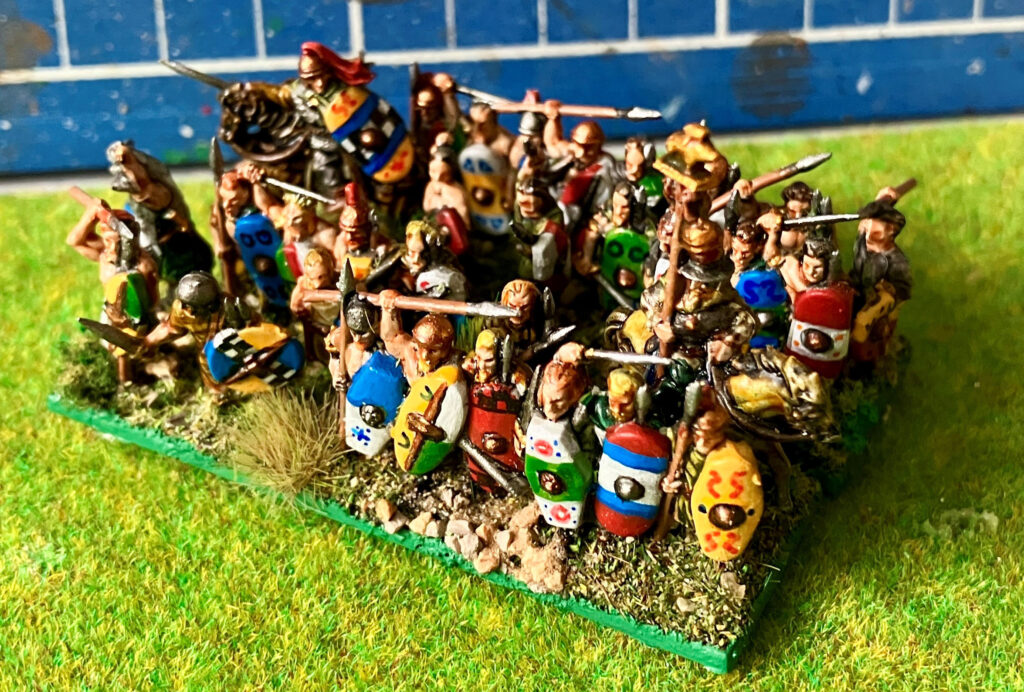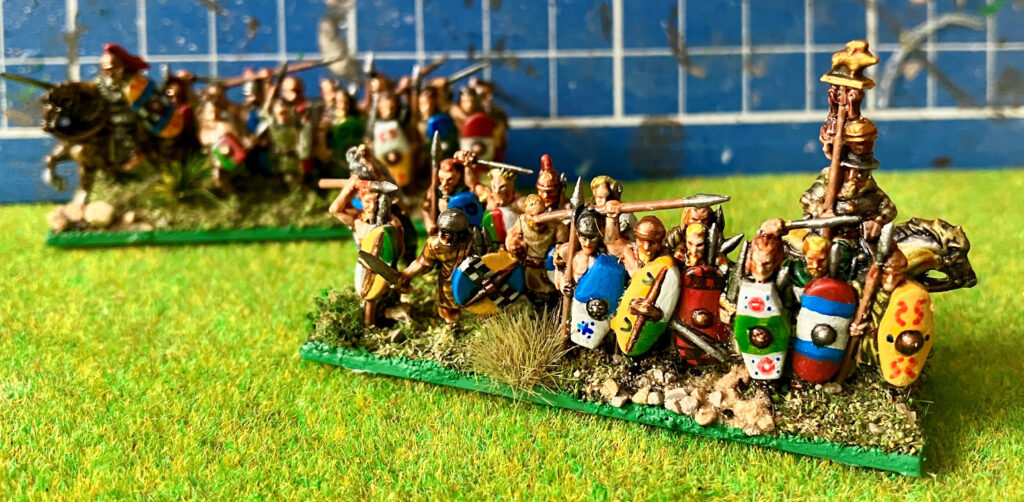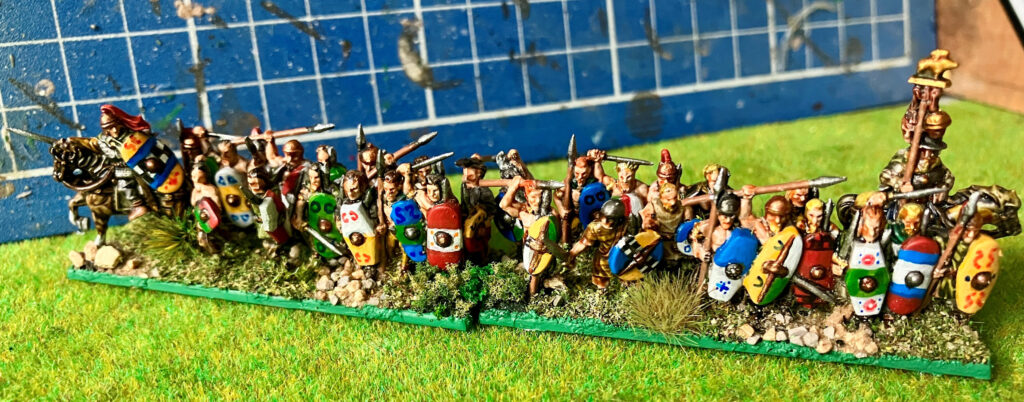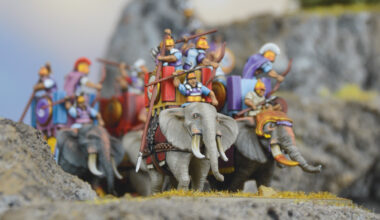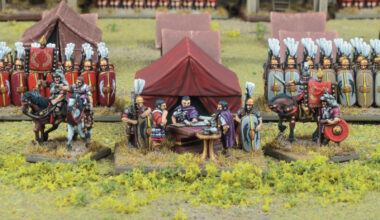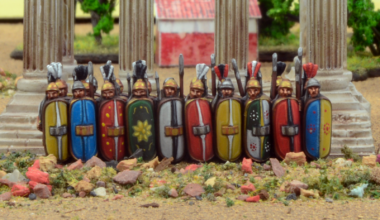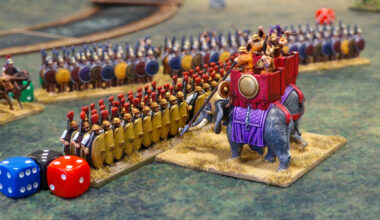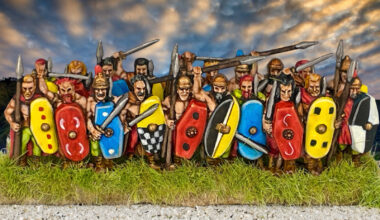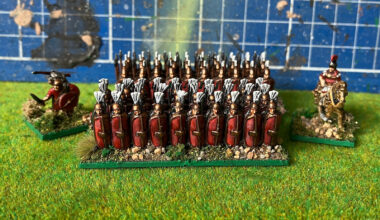This article was written by frequent guest contributor, Rhys Pogson Hughes Emanuel. If you’d like to feature your own Warlord Games game reports, conversions, miniatures or armies get in touch via articles@warlordgames.com!
In my last few Hail Caesar Epic Battles articles, I have been conducting a few experiments aimed at differentiating between factions with painting schemes, which I’ve been keen to continue with. Luckily the Gallic Celts sprue is ripe for this. Celts have always been a firm favourite when it comes to the painting bench. This time around I wanted to trial another technique to distinguish between tribes, and experiment with basing to help the figures stand out in a way that leaves no doubt that they are Celtic Warriors.
Ancient Celts are not a new subject to me, and thus it didn’t require me to do a lot of research in the way that some of the other unit types had. I simply pulled straight from my shelf two favourite resources: Ancient Celts by Tim Newark and Angus McBride and Rome’s Enemies (2): Gallic and British Celts from Osprey’s Men-At-Arms series. These combined with reference photos of the Warlord Games studio figures and articles like the Sprue Focus were enough for me to form my concept, and form an overall painting plan. I also recommend the growing range of YouTube video tutorials from the likes of Miniature Realms and Painting Panzers.
In previous articles I was comparing results for traditional painting techniques with those of Speed Paints side-by-side (Republican Romans, Roman/Carthage Allies). For the Celts I wanted to combine both techniques together on the same figures, targeting specific parts of the figure. From my first two trials I realised that Speed Paints worked best on areas that naturally had folds and layers, like clothing. To make flatter surfaces ‘pop’, it is better to use traditional layering. I decided to try and stick to these principles for these Celts.
I primed the miniatures in white, using my homebrew ink and overbrush method for an undercoat. Note that I also altered some of the strips. There is not necessarily any need to do so, but I wanted to try for a specific effect. More on that later.
For the clothing I alternated through a mix of earthy colours. I chose six in total (all Speed Paints) and targeting different areas of the Celtic attire to introduce greater variation.
To add that little extra touch of period style, I added some plaid patterns. I used a mix of red, blue, brown and black 0.05mm ink pens. I probably could have used paint, but the pens were much quicker and at this scale they achieve the desired depth of effect.
The sculpting of muscle tone and bare skin on these sprues is excellent, and therefore perfect to tackle with Speed Paints. I tidied up the overbrushing and shading, before applying a flesh-coloured Speed Paint. Whilst I did consider doing some figures with woad dyes, but in the near future I intend to do a fanatic-type unit and woad would be a good way to distinguish them from other types of unit.
I wanted the shields to be distinct, conveying their solid nature and their hand-painted designs. To achieve the effect, I used opaque layering. Research was key for both design inspiration and using appropriate colours. I also needed to strike a balance in simplifying the designs for Epic Battles scale against maintaining the cultural concepts. For the detailed work I used a combination of 0.05mm pens and paints.
To differentiate between the two tribes in my force, I was selective in the colours I used to paint the hair for each. One of my tribes has dark (black or brown) hair, and the other has light (blonde or red) hair. The effect isn’t immediately obvious, so the Celtic horde still looks homogenous. But it does allow me to quickly identify which tribe each stand belongs too. I believe it gives them a slightly different personality as well – but that could just be my imagination!
But what about the snipping I undertook, and the basing? As I re-read up on the Celtic style of fighting, I was really taken by the notion of individual warriors racing forward to confront their foes. I really wanted my bases to capture this vibe. Not that the strips in anyway look uniform, but I wanted to see if I could make them look even more wild. I wanted my warriors to look like they were breaking rank, rushing forward to engage with the enemy. The dynamic poses of the strips and (especially) the individual skirmishers was a great help in itself…
For the extra figures I have obviously used some of the Celtic skirmishers. But I also cherry-picked a few other skirmisher figures from the other sprues within the range, that I thought might make suitable conscripts! I don’t envisage all my Celtic bases being like this, but a good 50/50 mix across the mass. To split the strips, there are a couple of natural points where you can cut them easily.
With all of the above combined I definitely feel that I have manged to avoid uniformity, and I like the animated feel of the basing. The linking of bases together through hair is ‘ok’, but ok enough for my plans. I am now in the fortunate position of having to decide which Epic Battles unit to have a go at next!
~Rhys
Allied Troops in Hail Caesar Epic Battles
Allied Troops Division
